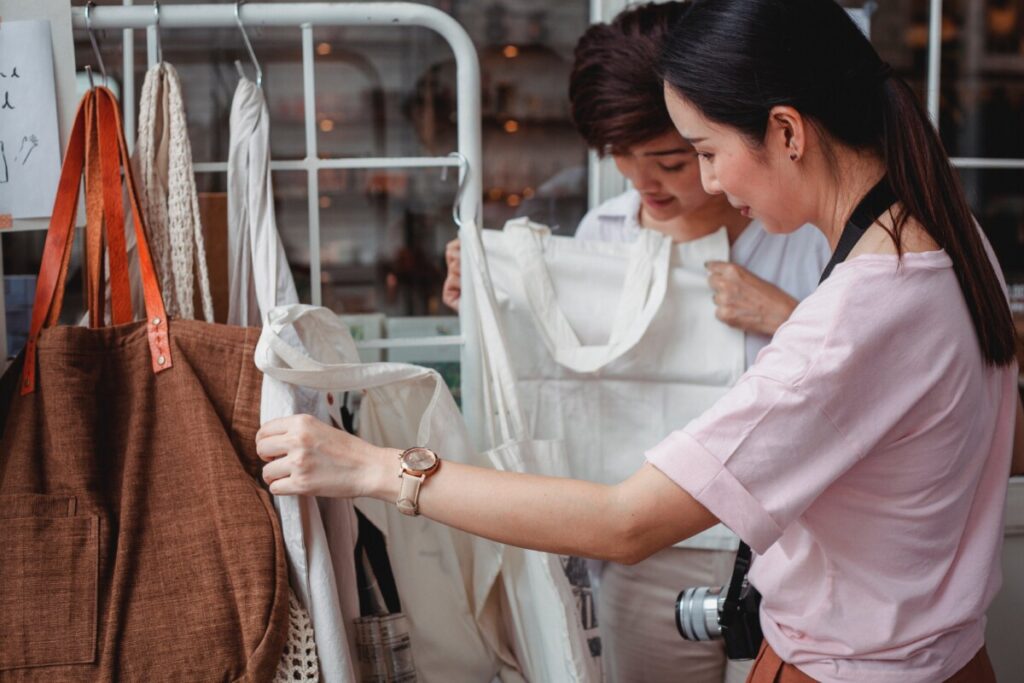What is Sustainable Fashion?

Sustainable fashion continues to be a hot topic in the fashion industry. As consumers become more conscious of the environmental impact of their purchases. But what exactly is sustainable fashion, and how can we understand the concept? In this blog post, we will delve into the topic of sustainable fashion, providing a professional and informative overview of this important concept. Whether you’re a fashion enthusiast or simply interested in learning more about sustainable living, this post is for you. So, let’s get started and explore the world of sustainable fashion!
What is sustainable fashion?
Sustainable fashion, also known as eco-fashion, is a movement that strives to produce clothing and accessories in an environmentally friendly and socially responsible way. Its aim is to break away from the traditional linear model of take-make-dispose and instead place emphasis on reducing waste, conserving resources, and promoting the overall well-being of our planet.
Within the fashion industry, sustainability encompasses a range of practices, such as using organic and sustainable materials. Reducing carbon emissions, advocating for fair working conditions, and embracing the principles of a circular economy. The ultimate objective is to minimize the negative impact of fashion on the environment and create a more sustainable, ethical, and transparent industry.
The impact of fast fashion on the environment
Fast fashion is a term that refers to the production and consumption of cheap, trendy clothing at a rapid pace. It has become the standard in the fashion industry, but it comes at a high cost to the environment. The production of fast fashion items uses large amounts of water, energy, and chemicals, causing pollution and depleting natural resources.
Furthermore, fast fashion promotes a culture of disposability. Where clothes are worn only a few times before being thrown away. This results in a significant amount of waste, as most clothing ends up in landfills. The synthetic fibers used in fast fashion garments take hundreds of years to decompose, further contributing to environmental degradation. To address these issues, sustainable fashion encourages a slower and more mindful approach to clothing consumption. It encourages individuals to invest in high-quality, timeless pieces that will last longer and can be repaired or repurposed when needed.
Sustainable fashion practices
Several other practices contribute to a more sustainable industry. One such practice is reducing waste through recycling and upcycling. Recycling involves transforming old or unwanted clothing into new fabrics or materials that can be used to create new garments. Upcycling, on the other hand, involves repurposing old or unwanted items to create something of higher value. Like turning a vintage scarf into a trendy top.
Another crucial practice is minimizing carbon emissions. Fashion brands are increasingly exploring ways to reduce their carbon footprint. For example, using renewable energy sources, optimizing transportation methods, and promoting energy-efficient production processes. Furthermore, sustainable fashion promotes the development of circular economy models. This means designing products with recyclability and longevity in mind, so they can be reused or repurposed at the end of their lifecycle. By embracing and advocating for these sustainable practices, the fashion industry can work towards a more circular and environmentally friendly future.
Sustainable materials in fashion
Traditional materials, such as conventional cotton and synthetic fabrics. It has a significant negative impact on the environment due to the heavy use of chemicals and non-renewable resources. In contrast, sustainable materials offer a more responsible alternative. Organic cotton, for example, is grown without the use of toxic pesticides and requires less water. Hemp is another sustainable material that grows quickly and doesn’t require as many resources as conventional crops.
Recycled fabrics, such as polyester made from recycled plastic bottles, are also popular in sustainable fashion. These fabrics reduce the demand for virgin materials. Divert waste from landfills, and help to reduce carbon emissions. In addition to fabrics, sustainable fashion also explores alternative materials. Such as vegan leather made from plant-based materials and innovative textiles made from agricultural by-products. By opting for clothing made from sustainable materials. Consumers can contribute to reducing the fashion industry’s impact on the environment.
https://serenity7wellness.com/index.php/2023/12/18/what-is-sustainable-living/
Recycling and upcycling in fashion
Recycling and upcycling are important practices in sustainable fashion that are focused on reducing waste and prolonging the lifespan of clothing items. In recycling, old, unwanted, or damaged clothing is transformed into new materials or products. This usually involves sorting, shredding, and re-spinning the fibers to produce new fabrics. These fabrics can then be used to make new garments or accessories.
On the other hand, upcycling is the process of repurposing old or unwanted items into something of higher value. It involves creatively transforming clothes or accessories into unique and stylish pieces. For example, an old pair of jeans can be turned into a trendy denim skirt or a vintage scarf can be transformed into a fashionable top. Both recycling and upcycling help to reduce the amount of clothing ending up in landfills and minimize the demand for new resources. By embracing these practices, consumers can actively participate in the sustainable fashion movement and showcase their style while reducing their environmental impact.
How to practice sustainable fashion in your daily life
Incorporating sustainable fashion practices into your daily life doesn’t have to be complicated.
Here are some simple steps you can take:
Buy less, choose well: Before making a purchase, consider if you need the item and if it aligns with your style. Opt for high-quality garments that are made to last.
Shop secondhand: Explore thrift stores, consignment shops, and online platforms for pre-loved clothing. Not only will you find unique pieces, but you will also prevent clothing from going to waste.
Support sustainable brands: Research and choose brands that align with your values. Look for brands that prioritize ethical sourcing, use sustainable materials, and promote transparency.
Repair and upcycle: Instead of replacing damaged clothing, learn basic sewing skills or take them to a local tailor for repairs. Get creative and upcycle old clothes into new stylish pieces.
Care for your clothes: Follow the care instructions on your clothing labels to ensure they last longer. Wash in cold water, air dry whenever possible, and avoid using harsh chemicals.
By making these small changes in your fashion choices and habits, you can positively impact the environment and support a more sustainable fashion industry.
Conclusion
Sustainable fashion is essential in addressing the environmental and social impact of the fashion industry. It is not just a passing trend, but a crucial movement. By understanding its significance, we can make informed choices as consumers and support ethical and sustainable practices. We have explored various aspects of sustainable fashion, from the impact of fast fashion to recycling and upcycling. Brands and influencers are at the forefront of this movement, and there are initiatives and events that promote sustainable fashion. Together, we can create a fashion industry that respects the planet and promotes a sustainable future.
https://www.earthday.org/
FAQ’s
1. What is sustainable fashion and why is it important?
Answer: Sustainable fashion refers to clothing and accessories that are produced in an environmentally and socially responsible way, with the aim of reducing waste and promoting ethical practices. It is important because traditional fashion production methods and fast fashion have a significant impact on the environment and on the workers involved in the production process.
2. How can I tell if a clothing brand is sustainable?
Answer: Look for information on the brand’s website about their production practices, materials used, and any certifications they have received for sustainability. You can also look for third-party certifications like the Global Organic Textile Standard (GOTS) or Fair Trade Certified.
3. Is sustainable fashion more expensive?
Answer: Not necessarily. While some sustainable fashion brands may have higher prices due to the use of more expensive materials or ethical production practices, there are also many affordable options available. Additionally, investing in higher-quality sustainable pieces can save money in the long run by reducing the need for frequent replacements.
4. Can I still be fashionable while wearing sustainable fashion?
Answer: Absolutely! Sustainable fashion has come a long way in recent years and there are now many stylish and trendy options available. Additionally, buying second-hand or vintage clothing can be a great way to add unique and fashionable pieces to your wardrobe while reducing waste.
5. What can I do to support sustainable fashion?
Answer: There are many ways to support sustainable fashion, including buying from sustainable brands, investing in high-quality pieces that will last, and buying second-hand or vintage clothing. You can also educate yourself and others about the importance of sustainability in fashion and advocate for change in the industry.







